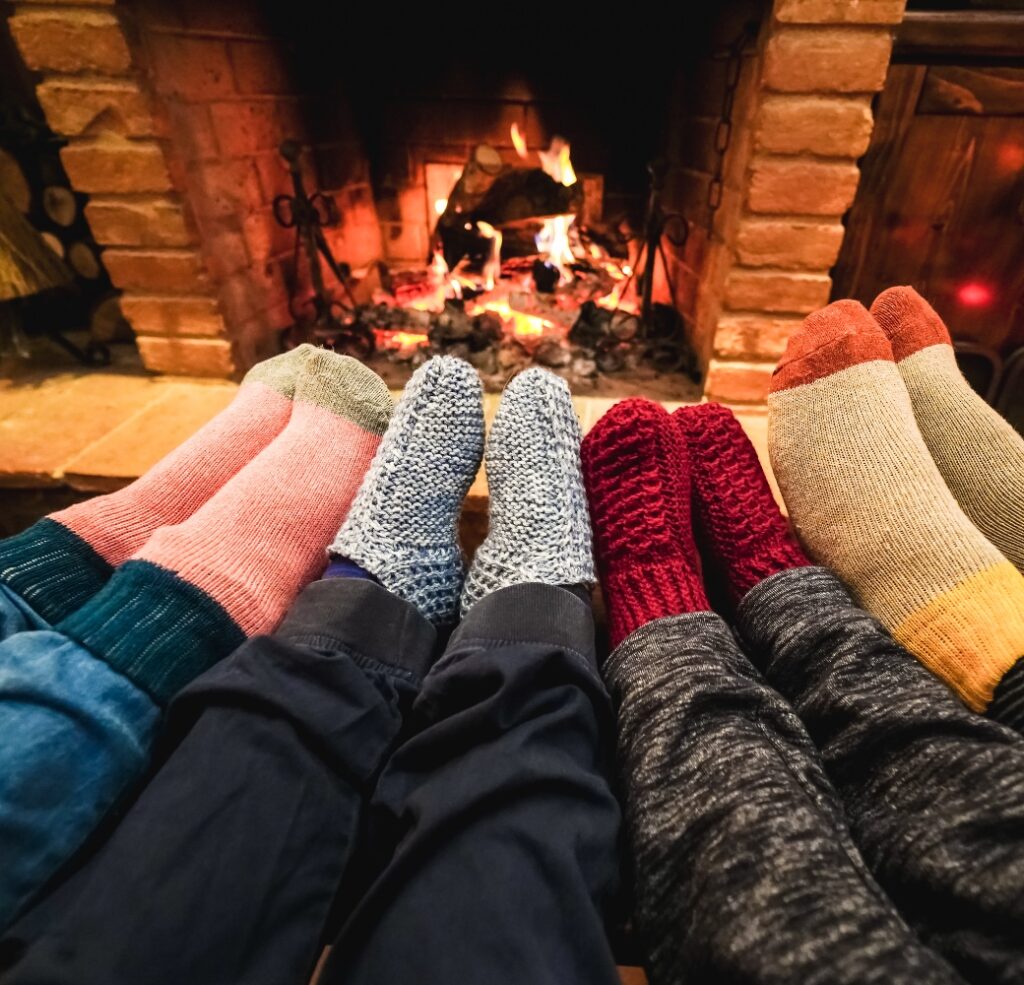How Much Firewood Will
You Need For The Winter?
Winter’s approaching, and the snap of cold is already in the air. Whether it’s your first time with a wood stove or you’re a seasoned veteran, a big question that pops up every year is, “How much firewood will I need for the winter?” Now, wouldn’t it be perfect if there was a one-size-fits-all answer? But the truth is, your firewood needs depend on a few variables. So, let’s unpack this together and guide you through the calculations.

Size and Efficiency of Your Stove
Simply put, the physical size of your stove’s firebox determines how much wood it can gobble up at a time. A larger stove can take in more wood, and naturally, it’ll consume more if you keep it running constantly. But there’s a perk, it will also radiate more heat, warming up bigger spaces or even multiple rooms.
Now, here’s where it gets intriguing. Two stoves of the same size might use wood at different rates, all because of how efficiently they burn. Modern stoves are designed with advanced technologies. They maximize the amount of heat produced from every log, thanks to better airflow systems and insulation. This means that they produce more heat per log, allowing you to use fewer logs over the same duration. On the other hand, an older or vintage stove model might not utilize the wood as thoroughly, resulting in more frequent reloads and potentially more wood used over the winter.
It’s not always about age, but generally, newer models tend to be more efficient due to advancements in stove design. So, if you invested in a stove in the last few years, chances are it’s designed to give you the most warmth out of every piece of wood. But if you’re rockin a classic model from decades past, while it undoubtedly has its own charm, it may not be as wood-saving as you’d like.
With these details in mind, you can start to piece together the burning habits of your stove. Whether it’s modern and efficient or a beloved older piece that has a slightly bigger appetite, understanding its nature can guide your firewood stocking strategy.
The Kind of Wood You’re Using
Hardwoods like oak, hickory, and maple burn slower and give off more heat. Softwoods like pine or spruce will burn faster, but might not give you as much warmth. If your firewood stack is mainly hardwood, you’ll require less compared to a pile that’s predominantly softwood. Hardwood burns slower and produces less creosote, so if you are looking for long fires and utilizing less wood over the winter, this is your best bet. However, if you are looking for hotter and short cozy evening fires, softwood would be a good choice. More creosote, but it will heat up fast and produce more heat quickly. Just at the price of burning more wood. Hardwoods will be more expensive as you can imagine.


How Many Stoves Do You Have?
Do you have a second stove in your garage or shop, as well? If so, you’re going to need more wood (obviously). A stove in your living room might keep the main house warm, but if you’re looking to work in your shop during December, you’ll want that space to be comfortable as well. Next question would be, “What is the frequency of using that second stove?” Once a week? Three days a week?
The details of that are below in the ‘Estimating Your Firewood Needs’ Section.

Your Reliance on the Stove
How reliant are you on your wood stove for heat? If it’s your primary source, naturally, you’re going to need more wood. But if you’re using it more for ambiance or only during those particularly chilly nights, your firewood consumption will be less. Also, consider power outages – if you live in an area prone to losing power in the winter, you might end up using your stove more than you think.

The Space You’re Heating
Your home’s size and insulation quality play a crucial role. A small, well-insulated cottage will require less wood than a sprawling, drafty mansion. Assess the areas you’ll be heating and consider if some rooms can be closed off to save on firewood.

Your Personal Toastiness Threshold
Some of us (and I know who you are) like your home to be the Sahara desert during winter instead of a nice room temp. If you’re someone who prefers sunscreen weather indoors when it’s snowing outside, you’ll be feeding your stove more often than someone who’s comfortable with just warding off the chill.
Estimating Your Firewood Needs
Given all these factors, here’s a rough ballpark and example… A typical home using a wood stove as a primary heat source might burn 3 to 5 cords of hardwood in a winter. If your stove is just supplemental and used mostly for a few cozy nights, Saturday mornings and a possible power outage, 1 to 2 will see you through nicely. And for estimating wood for a second stove, here is a quick calculation…
128 cubic feet (per cord) ÷ 0.5 cubic feet (per piece) = 256 pieces
Now, that’a as long as the wood averages the usual 16 inches long and 6 inches in diameter. Cords are not calculated by pieces, they are calculated by area.
Example calculation: Let’s say you plan to be in your shop (second stove) working 3 days a week for 5 hours at a time. You would be looking at burning 4-8 pieces of hardwood a day (5-9 softwood). So, for 3 days, that would be 12-25ish pieces of wood per week. Let’s take the averages and make a calculation…
18 pieces a week (3 fires lasting 5 hours) x 16 (cold weeks) = 288
You’ll need at least an additional cord of work for your second stove. Hopefully this helps zero in on how many cords you may need! Now remember, this is just an average. Your specific situation might mean you need more or less. But with this, you can calculate for any stove you plan on using.
In Conclusion…
The glow of a wood stove is one of winter’s finest pleasures. Knowing you’re adequately stocked up on firewood is great peace of mind. Take some time to assess your situation using the pointers above, and you’ll have a clearer idea of your firewood needs. And if ever in doubt, always lean on the side of a bit extra. It’s better to have too much than to run out on a frosty February night.
And if you have questions or need guidance, don’t hesitate to swing by Chimney Techniques.

Tune In to Our Weekly Blog
Home Is Where The Hearth Is
Home Is Where the Hearth Is Blog
We’re here not just to sell stoves but to ensure your winter is warm, cozy, and hassle-free. Stay warm out there!
Hope this helped!
Chimney Techniques, The favorite Aberdeen fireplace shop
